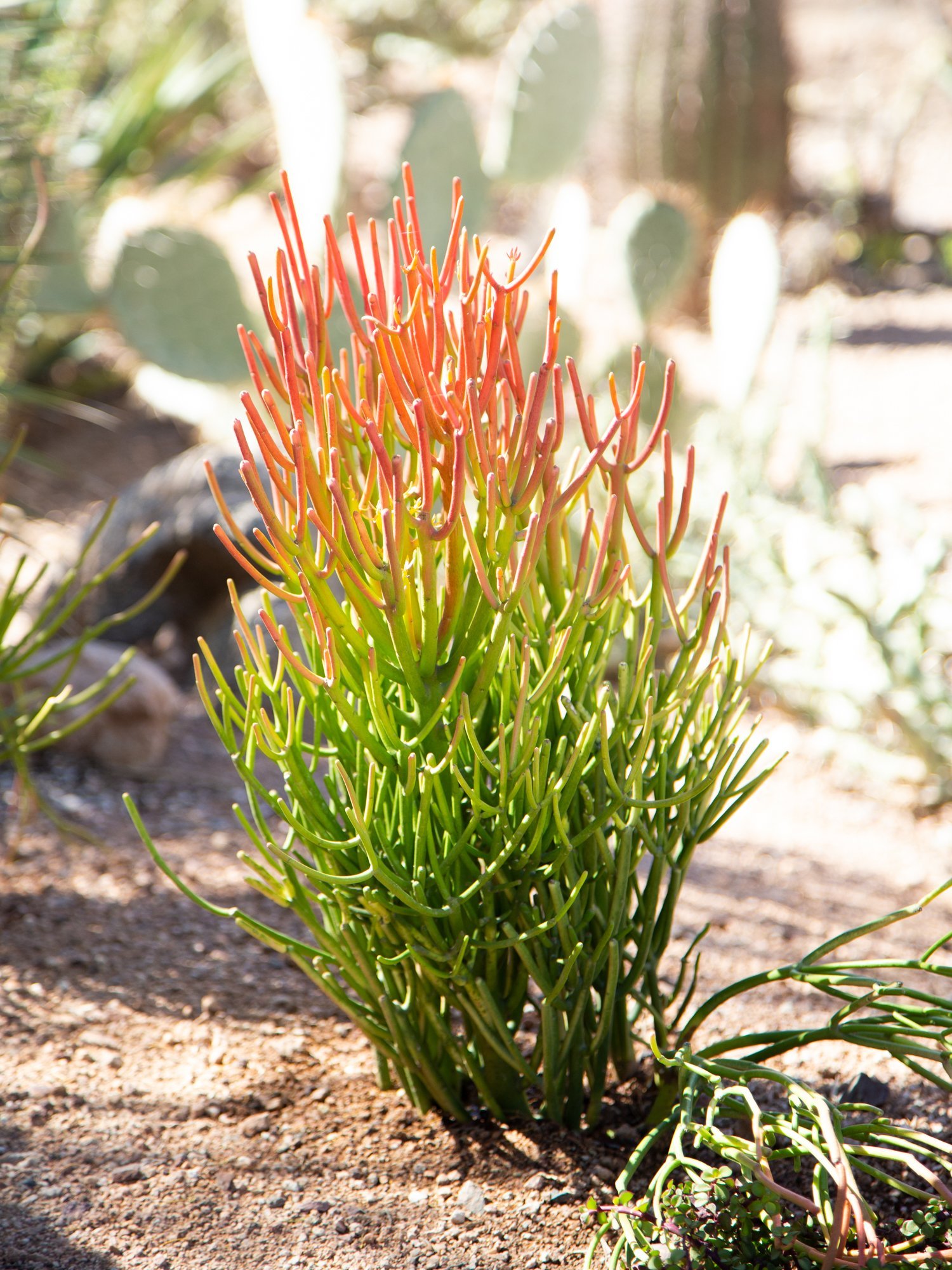Succulents are natural survivors when it comes to thriving in hot desert climates. These hardy plants evolved to store water in their thick leaves, stems, or roots, making them exceptionally drought-tolerant.
In regions with extreme heat and low rainfall, desert succulents don’t just survive — they flourish.
Their ability to withstand intense sunlight, conserve water, and resist temperature fluctuations makes them ideal candidates for arid garden succulents or succulents for dry areas.
Whether you’re landscaping a sun-scorched backyard or decorating a terrace in a high-temperature zone, choosing heatproof succulents is a smart, low-maintenance option.
Key Traits of Succulents for Desert Environments
What makes a succulent suitable for desert heat? It’s not just about surviving without water for long periods. Here are the essential traits:
- Water storage capability: Thick, fleshy parts that retain moisture.
- Sun-loving: Tolerant or even dependent on full sun exposure.
- Minimal watering needs: Can go weeks without irrigation.
- Compact growth habit: Helps reduce moisture loss.
- Tough outer coating: Waxy or spiny textures help reduce transpiration.
If you’re planning a desert landscaping project or simply looking for sun-loving succulents for your balcony, identifying these traits will help ensure long-term success.
Top Benefits of Growing Succulents in Hot Climates
Succulents are more than just beautiful. They’re incredibly practical in harsh environments. Here are some of the biggest benefits of choosing drought-tolerant succulents for hot desert climates:
- Water efficiency: You save precious water, making them ideal for xeriscaping.
- Low maintenance: These are some of the easiest plants to care for, even for beginners.
- Pest resistance: Many succulents naturally deter pests and diseases.
- Heat resilience: Unlike other plants that wilt in the heat, high heat tolerant succulents stay upright and vibrant.
- Aesthetic appeal: Their variety in shapes, sizes, and colors can transform barren outdoor spaces into eye-catching oases.
Top 10 Succulents for Hot Desert Climates
1. Agave americana (Century Plant)
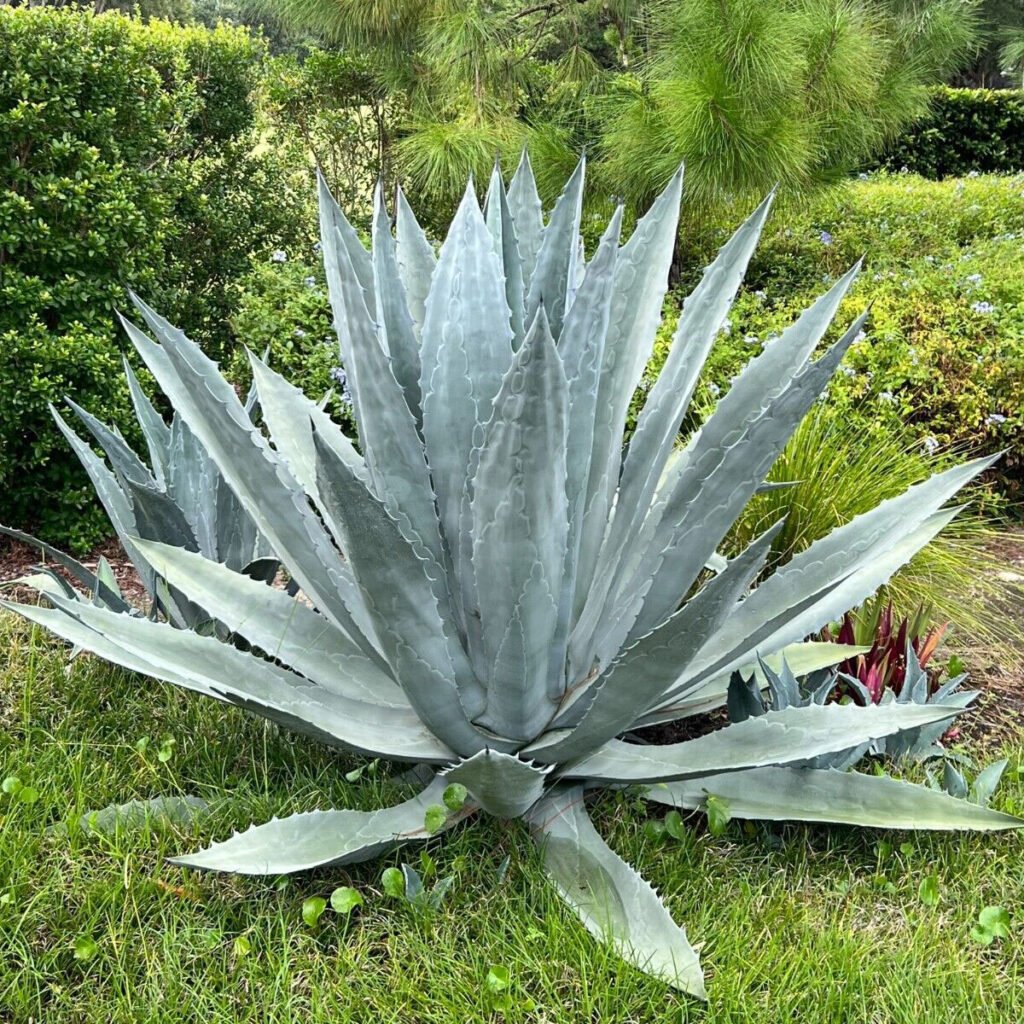
One of the most iconic desert succulents, Agave americana is known for its striking blue-green leaves with sharp spines.
This plant thrives in full sun, tolerates extreme heat, and is perfect for xeriscaping large, open landscapes. It rarely needs water once established and offers dramatic architectural appeal.
2. Aloe vera
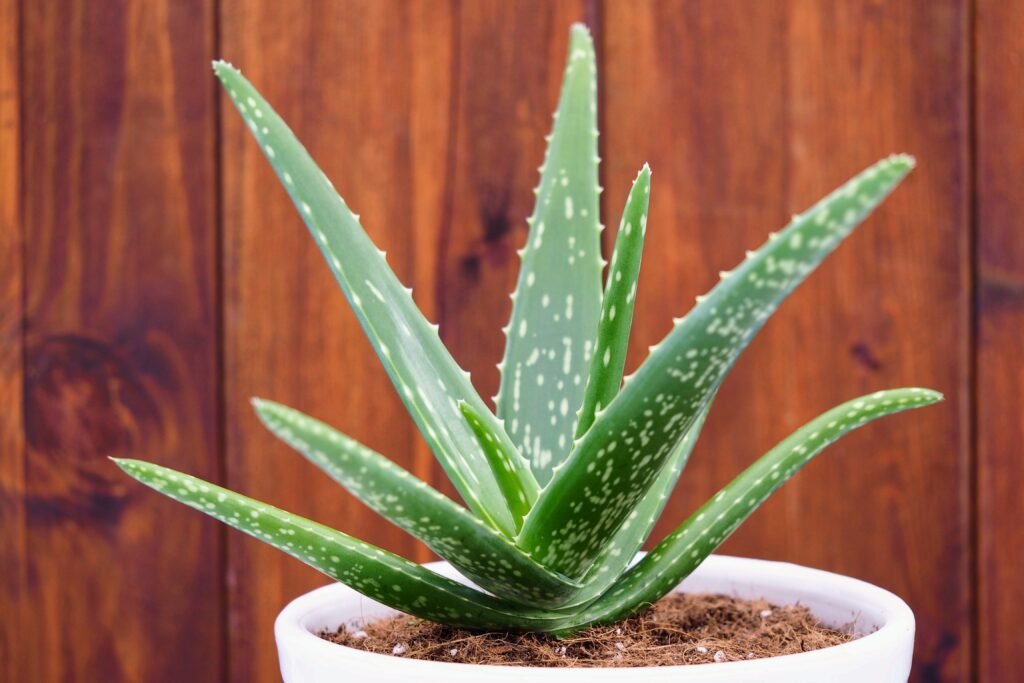
Not only is Aloe vera known for its medicinal uses, but it’s also a champion of hot climate survival.
Its fleshy leaves retain moisture efficiently, making it ideal for dry and sunny climates. Plus, it adds a fresh, green look to outdoor patios or indoor window sills.
3. Euphorbia tirucalli (Pencil Cactus)
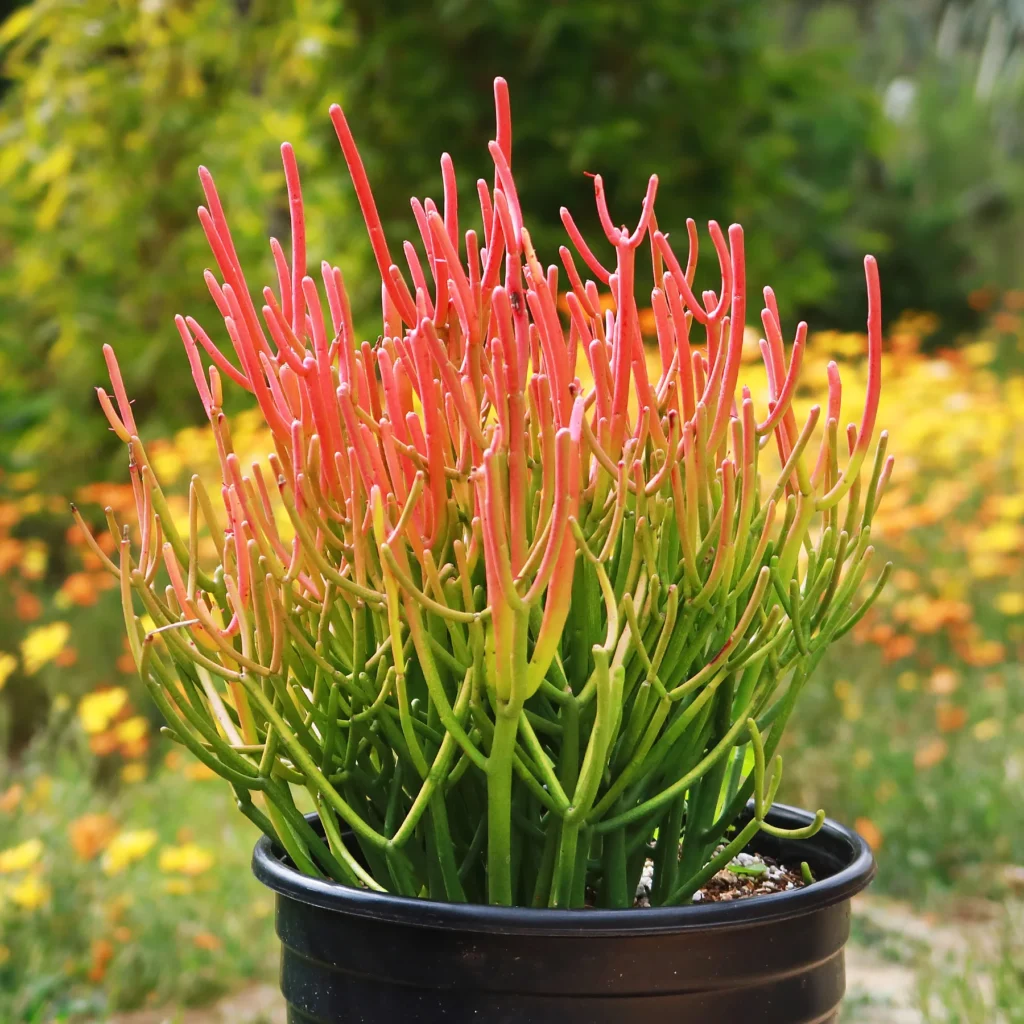
Also called the firestick plant, this succulent loves direct sun and thrives in arid, sandy soil. It can grow tall, adding vertical interest to a garden. Caution: Its sap is toxic and should be kept away from pets and children.
4. Sedum nussbaumerianum
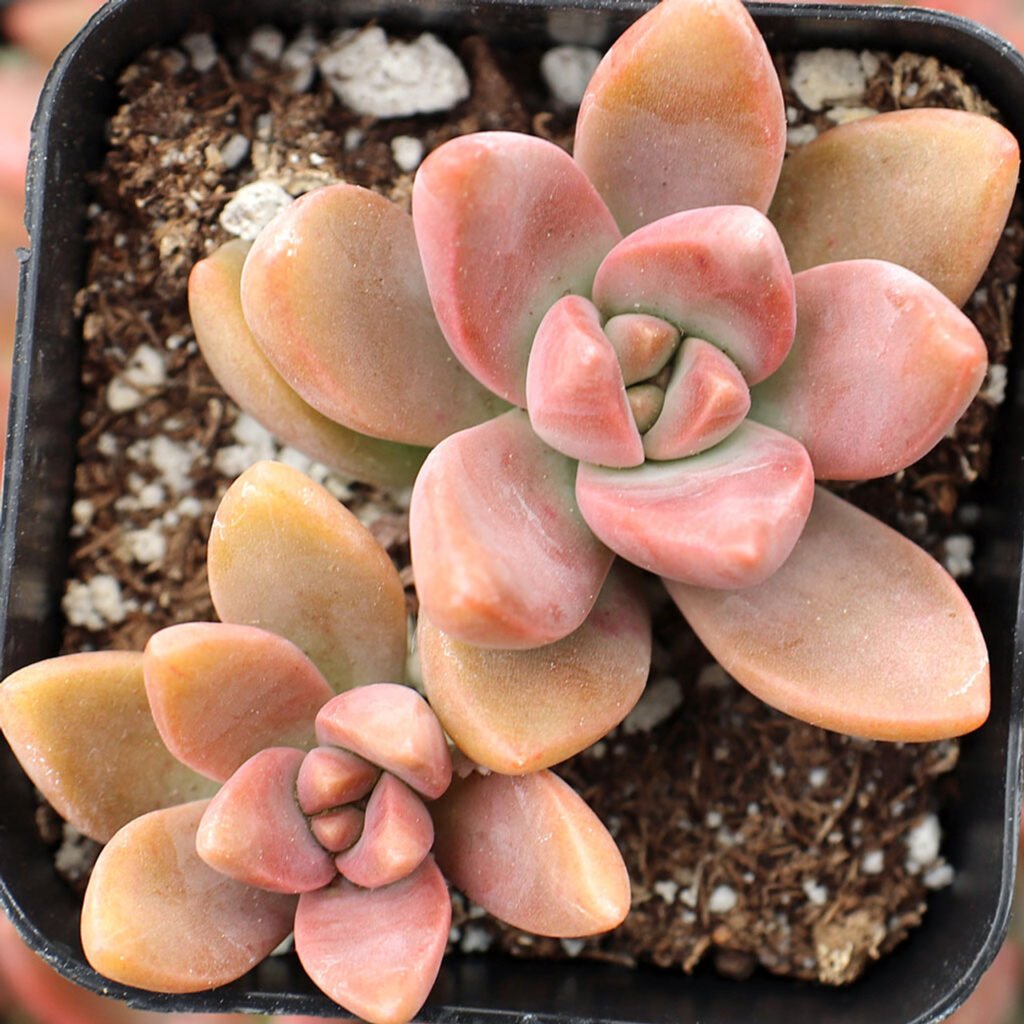
This small rosette-forming succulent develops orange-bronze tones under sun stress. It’s one of the best colorful succulents for desert gardens, requiring little care beyond occasional watering and plenty of sunlight.
5. Opuntia (Prickly Pear Cactus)
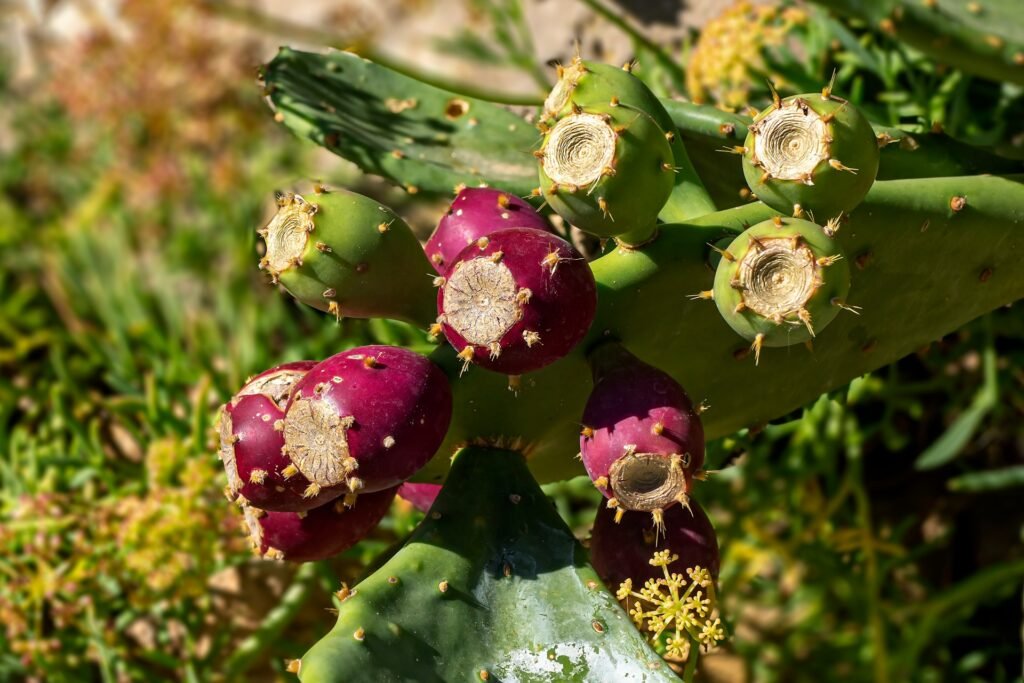
Famous for its flat, paddle-like segments and edible fruits, Opuntia thrives in intense sun and drought. It’s an excellent choice for large landscapes and functions well as a heat-tolerant barrier plant.
6. Echeveria agavoides

This popular rosette-forming succulent handles direct sunlight better than many other Echeveria species. With red-tipped leaves and compact form, it makes a charming addition to containers or desert beds.
7. Kalanchoe thyrsiflora (Flapjack)
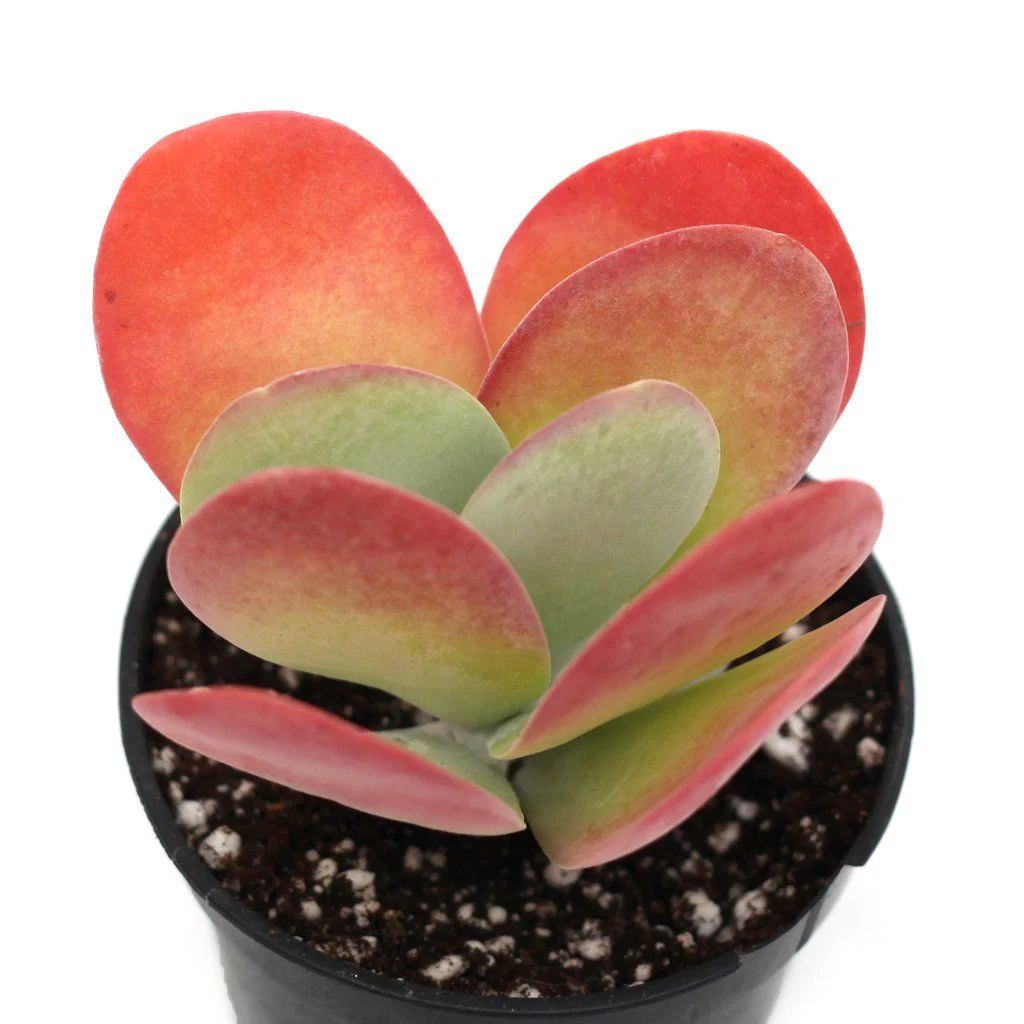
Known for its large, paddle-shaped leaves that often blush red under strong sun, this plant is both striking and tough. It’s ideal for hot, dry balconies or gardens.
8. Ferocactus (Barrel Cactus)

Native to the deserts of the American Southwest, these globe-shaped cacti are sun-hardy succulents that require minimal care. Their vivid yellow, orange, or red blooms make them great focal points.
9. Crassula ovata (Jade Plant)
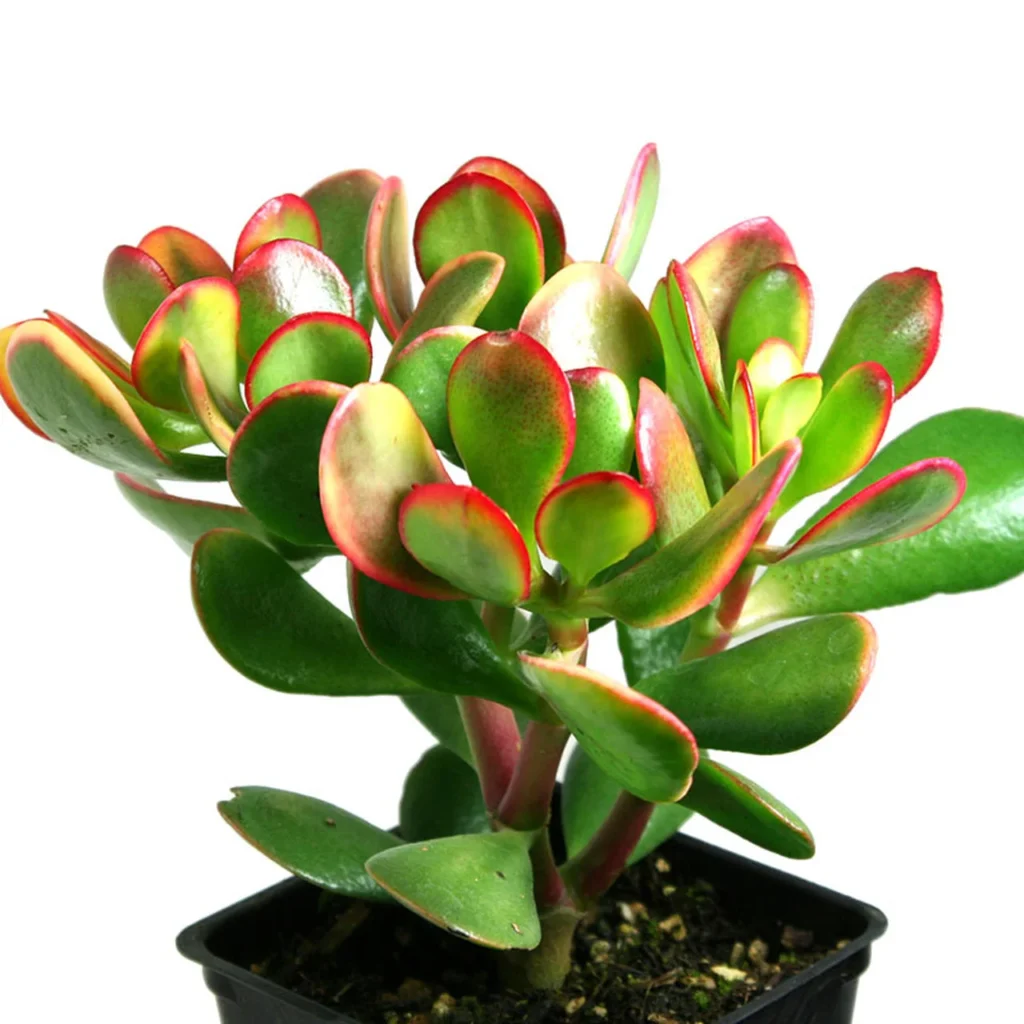
This classic succulent can handle more heat than you might think. Once established, it survives long dry spells and thrives in containers or directly in the ground, provided it gets good drainage.
10. Portulaca grandiflora (Moss Rose)

While technically a succulent flowering plant, Portulaca adds brilliant color to hot spaces and tolerates blazing sun and poor soil like a champ. It’s perfect for hanging baskets or desert-themed planters.
Choosing the Right Succulents Based on Sun Exposure
Different succulents handle sunlight differently. While most on the above list love direct sun, be mindful of your space’s microclimate. For example:
- South-facing walls and open gardens are ideal for full-sun succulents like Agave or Opuntia.
- Partial shade areas can accommodate Kalanchoe or Crassula, which may need afternoon sun protection.
How to Care for Succulents in Hot Desert Climates
Soil Selection for Desert Succulents
Good soil is the foundation of healthy succulents—especially in hot, dry climates.
- Fast-draining mixes are essential. Choose a cactus or succulent-specific soil mix.
- Add perlite, coarse sand, or pumice to increase drainage.
- Avoid moisture-retaining ingredients like peat moss, which can cause root rot.
In garden beds, elevate the planting area slightly to encourage runoff and prevent standing water.
Watering Strategies in Extreme Heat
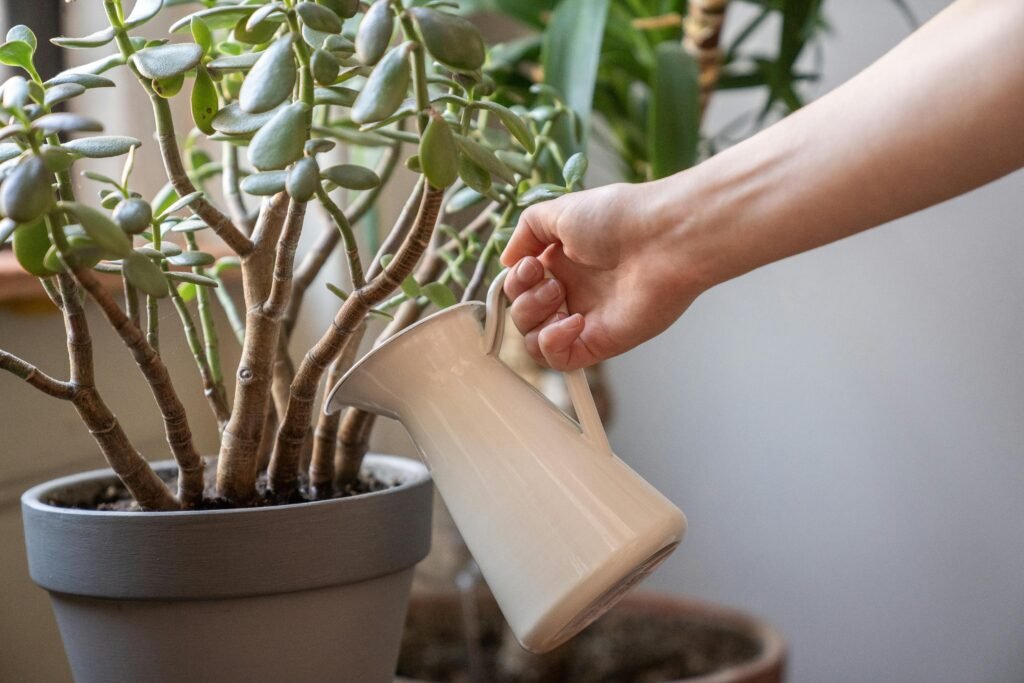
Watering succulents in the desert is more about rhythm than frequency.
- Water deeply but infrequently, allowing the soil to fully dry out between sessions.
- Early morning or evening is the best time to water—this prevents rapid evaporation.
- In peak summer, established desert succulents may only need watering every 10–14 days.
- Use a moisture meter to check deeper soil levels, especially for larger cacti like Agave or Barrel Cactus.
Overwatering is more dangerous than underwatering—many succulents store plenty of moisture in their leaves.
Container vs. In-Ground Planting
Potted succulents heat up faster and dry out quickly. To protect roots:
- Use terracotta or clay pots for breathability.
- Avoid black or metal containers that absorb heat.
- Keep pots slightly elevated to encourage airflow underneath.
In-ground planting is better for larger succulents and permanent landscaping. Use gravel mulch to reduce soil temperature and reflect heat away from the base.
Mulching for Moisture Retention
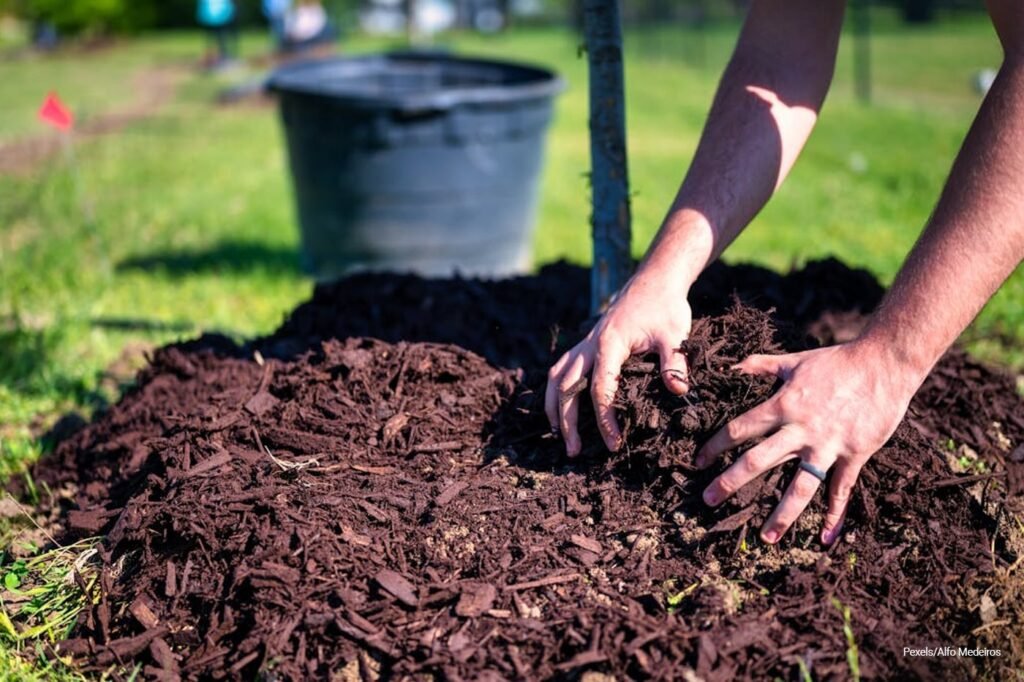
While traditional mulch holds too much moisture for succulents, inorganic mulches work beautifully in desert gardens:
- Gravel, crushed granite, or pebbles help retain soil moisture and reduce weeds.
- They also provide a clean, architectural finish around your succulents.
Avoid organic mulch like bark chips, which can trap excess moisture and promote rot.
Shade Cloth and Sun Filters
Even sun-loving succulents need a little protection during extreme midday heat.
- Use shade cloth (30–50%) to protect tender varieties or new transplants.
- Plant near larger rocks or walls that offer partial shade during the hottest part of the day.
- Desert trees with dappled light—like mesquite or palo verde—can act as natural shade sources.
Protecting succulents from intense, unfiltered sunlight ensures they don’t burn or lose color.
Design Tips and Problem Solving in Desert Gardens
Common Problems with Succulents in Hot Climates
Despite being heat-tolerant, succulents still face a few challenges in desert gardens. Here’s how to identify and solve them:
Sunburn and Leaf Scorching
Succulents like Echeveria or Haworthia may get sunburned when exposed to unfiltered afternoon sun.
- Symptoms: bleached spots, crispy edges, or brown blotches.
- Solution: Provide filtered light or move potted plants into partial shade.
Root Rot from Sudden Rains
Desert storms can dump heavy water quickly, and poorly draining soil won’t cope well.
- Elevate planting beds and avoid low spots.
- Use soil that drains within a few minutes—not hours.
Pest Build-Up in Dry Weather
Heat brings out spider mites, mealybugs, and aphids.
- Spray with a gentle neem oil solution or rinse with water.
- Remove infected leaves and monitor new growth weekly.
Creative Garden Design with Desert Succulents
Desert gardens don’t need to feel dry or dull. With succulents, you can design striking and water-wise spaces:
Rock Gardens and Cactus Beds
- Mix large boulders, gravel, and spiny succulents like Golden Barrel Cactus or Agave americana.
- Layer heights for dramatic effect—low rosettes in front, tall columnar cacti at the back.
Pathway Borders
- Use succulents with neat forms—like Blue Chalksticks or Ice Plant—to line stone walkways.
Courtyard and Patio Displays
- Combine potted succulents with desert palms, statues, and ceramic urns.
- Group plants in odd numbers (3s and 5s) for a more natural look.
Color Contrast in Dry Landscapes
- Pair Red Yucca with pale green Aloe, or combine purple-toned Graptoveria with Golden Sedum.
- Use dark gravel or rusted metal planters to make colors pop.
Succulents offer texture, symmetry, and striking color contrast—all perfect for a dry, modern aesthetic.
Seasonal Care for Succulents in Desert Environments
Even in the desert, seasons bring subtle changes. Succulents need slightly different care throughout the year.
Summer
- Water early in the morning or late evening to reduce evaporation.
- Move delicate varieties like Graptopetalum to partial shade.
- Avoid repotting—roots are more vulnerable to heat stress.
Winter
- While rare, desert nights can drop near freezing.
- Protect frost-sensitive species like Adenium with covers or bring pots indoors.
- Cut back on watering drastically—many succulents go dormant in winter.
Spring and Fall
- Ideal seasons for planting or repotting.
- Fertilize lightly with an organic cactus feed.
- Prune leggy growth and propagate healthy leaves.
Maintenance Tips for Long-Term Success
- Remove dead leaves: Prevents pests and rot buildup.
- Clean debris and dust: Improves photosynthesis and aesthetics.
- Rotate pots: Ensures even sun exposure and prevents leaning.
Healthy succulents need very little attention but consistent observation goes a long way.
Frequently Asked Questions
1. Can succulents really survive extreme desert heat?
Yes, especially types like Agave, Aloe vera, Opuntia, and Golden Barrel Cactus. Just ensure good soil, proper spacing, and shade when needed.
2. How often should I water succulents in the desert?
Typically every 7–10 days in summer, and once a month or less in winter. Adjust based on drainage and plant type.
3. What succulents are safe for pets?
Try Haworthia, Echeveria, or Graptosedum. Avoid Aloe vera and Euphorbia, which are toxic to pets.
4. Can I grow desert succulents indoors?
Yes, with bright windows and well-draining pots. Some may stretch or lose color if they lack direct light.
5. Do I need to fertilize desert succulents?
Minimal feeding is fine. Use an organic, diluted cactus fertilizer once in spring and once in fall.
Final Thoughts
Succulents are natural survivors, and with the right strategies, they thrive in even the hottest desert climates. Whether you’re building a rock garden in your backyard or styling a desert-themed balcony, the possibilities are endless.
By choosing heat-tolerant varieties, using the right soil, and watering with care, you’ll enjoy a vibrant, resilient succulent garden that doesn’t just survive the sun—it flourishes under it.
Let your desert garden be both drought-smart and breathtakingly beautiful.
